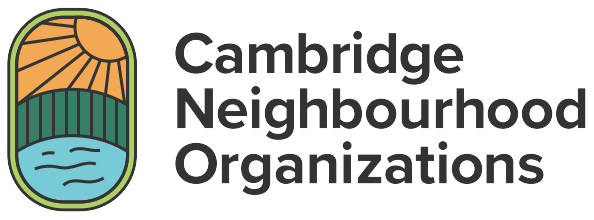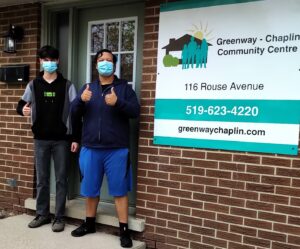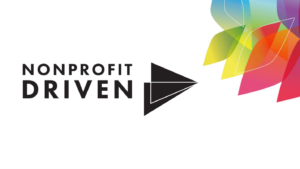After months of isolation, young people are reconnecting with each other and their neighbourhood.
The negative outcomes of the pandemic have impacted us all greatly with both our physical and mental wellbeing. Social interactions, which have been limited as a result of changing restrictions on gatherings, are a key part of youths’ development and are critical for social skills and personal growth.
Our youth have shown us their resilience through the pandemic by remaining positive and connected however possible.
Fortunately, as the number of COVID-19 cases decreased and social gathering restrictions lifted, many have been able to return to in-person gatherings and programming. The Cambridge Neighbourhood Organizations (CNO) were able to bring our youth volunteers back in-person this summer, many for the first time since the start of lockdown. Through Leaders In Training (LIT), community gardens, pop-up playgrounds, and more, the CNO has seen the benefits of our youth reconnecting with each other and their communities firsthand. Our youth have shown us their resilience through the pandemic by remaining positive and connected however possible. We are confident that this triumphant return to community-based volunteerism will be a key step to help our neighbourhoods return to normal.
We sat down with some of our youth volunteers to ask them about the experience of returning to our centres in-person:
Our LIT Sarah told us that the previous year came with an increase in social anxiety and missing her friends as a result of not being connected with her community centre. To her, returning this year “feels great to volunteer again in-person because I get to see friends and do good things.”

Emma told us that the isolation affected her “because I couldn’t experience or do anything I wanted to do. I wasn’t always allowed to see people [or] meet new people, and I couldn’t play the sport I love. It also affected me because I couldn’t do the HVNA [Hespeler Village Neighbourhood Association] camp for LIT-ing because of the pandemic.” To Emma, reconnecting with HVNA has meant, “I got to do many fun activities, meet new people and learn many new things. It was really nice to be able to help out and be a part of the program.”

As mentioned, children and youth are resilient and Haley’s answer highlights this. “The pandemic did affect me but not as much as others; yes I missed my friends and family but I was able to just focus more on myself and school which has helped.” Even though each youth experienced the pandemic differently, they all see the value in volunteering and being connected with their Neighbourhood Association.

It feels great to be a volunteer knowing that I am able to help whoever needs to be helped in that situation. It makes me feel better about myself knowing that I can help others around me.
With the Neighbourhood Association reopening to the public, our volunteers have been with us to help with everything. Zahra from Alison Neighbourhood Community Centre (ANCC) says, “It’s nice coming back after a few years.” Haley from HVNA told us “It feels great to be a volunteer knowing that I am able to help whoever needs to be helped in that situation. It makes me feel better about myself knowing that I can help others around me.” Between the eight neighbourhoods in our network, we were able to utilize 142 youth volunteers this summer alone. Youth volunteers are an integral part of our network’s mission for community development. By investing in the development of our youth, we are investing in the future of our neighbourhoods.
Check out your Neighbourhood Association’s website and social media for updates and our next volunteer call!
The Cambridge Neighbourhood Organization includes eight neighbourhood associations including Alison Neighbourhood Community Centre, Fiddlesticks Community Centre, Greenway Chaplin Community Centre, Hespeler Village Neighbourhood Association, Kinbridge Community Association, Langs, Preston Heights Community Group, and Silverheights Community Association. Each of our eight neighbourhoods provides numerous opportunities for children and youth to be involved, whether it be through after-school programming, PA Day camps, youth councils, and more. Check out your Neighbourhood Association’s website and social media for updates and our next volunteer call!





